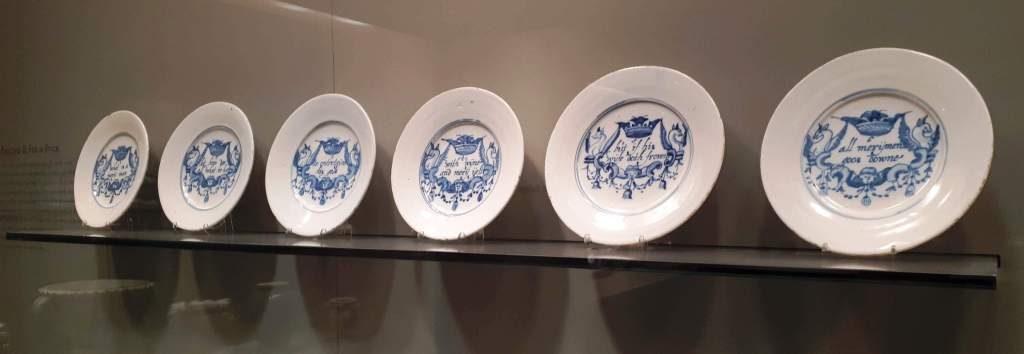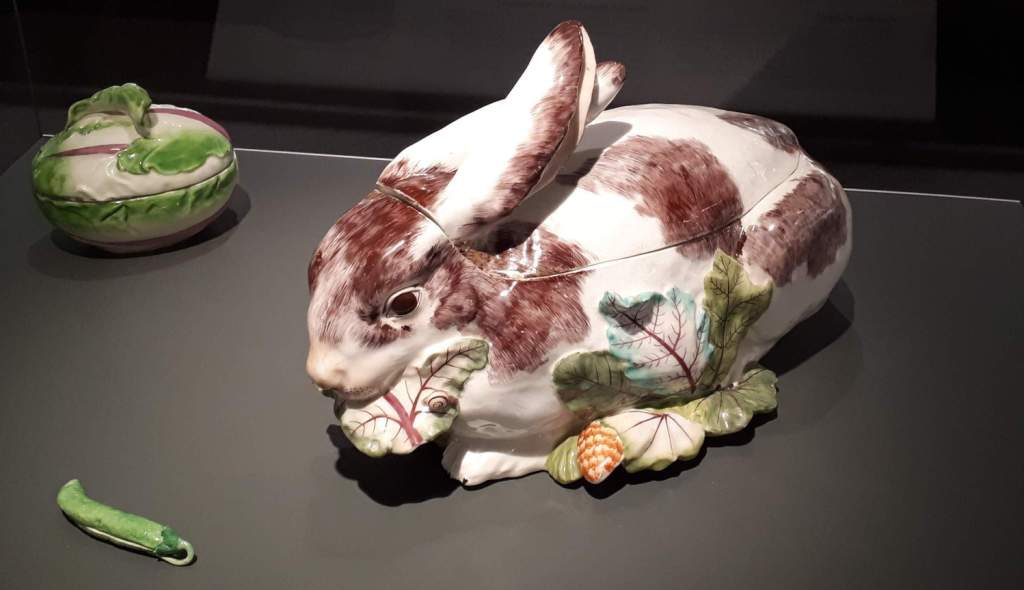I’m reminded of an episode of the Twilight Zone starring Burgess Meredith, in which he finds himself alone after a nuclear war, in the remains of the public library with all the time in the world to read, at last. The twist is he then accidentally drops and breaks his glasses. Despair!
My visit to the Gardiner Museum of ceramics last night was very much like that, when I realized I’d left my reading glasses at work. Sigh ……..
However, I was lucky to be invited to join a gallery tour by docent Isabelle, which salvaged my visit. Her theme was “Upstairs, Downstairs,” ceramics of the emerging English middle class in the 1600s and 1700s (which hit my London button – yes, please!).

One particularly interesting exhibit was this full set of six tin-glazed earthenware (delftware) “Merry Men” plates, from England (or possibly the Netherlands), 1680-95.
The inscriptions (one verse per plate) say:
(1) what is a mery man
(2) Let him doe all what he kan
(3) to entertayne his ge[s]s
(4) with wyne and mery yests
(5) but if his wyfe doth frowne
(6) all meryment goos downe
The docent suggested that these plates may have been used in London in a guild hall (i.e. not in a family home), which got my imagination running about which guild, and the merriment these plates might have seen over the years.
Thought not on the tour, I was delighted to spot the one object I most clearly recall from my only previous visit to the Gardiner Museum years ago: the charming Rabbit Tureen, made of porcelain and produced in Chelsea, London, c. 1755-56. The accompanying text notes that:
Just charming.
The Gardiner Museum is museum no. 5 in my #100museums challenge (see 100 Museums Challenge).

